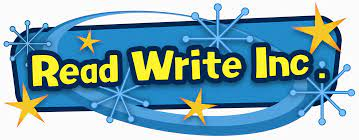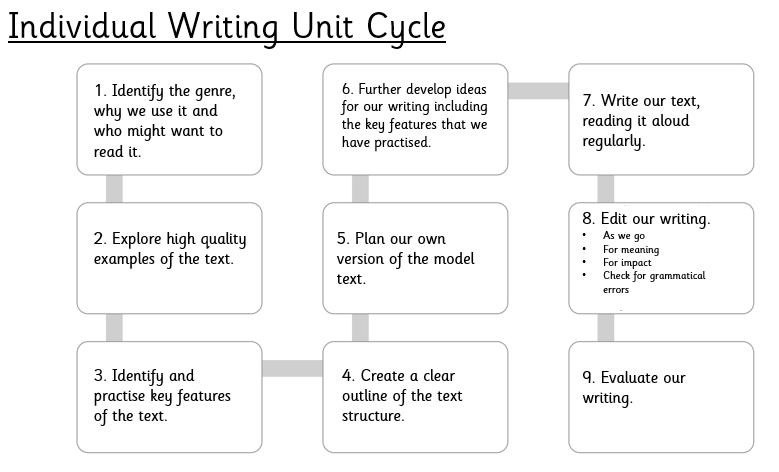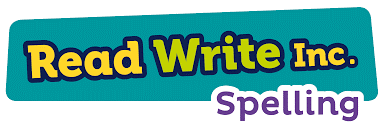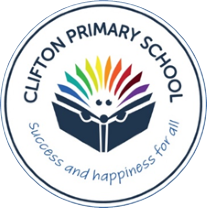Great Writers at Clifton
How we teach Writing at Clifton
Curriculum Intent
At Clifton Primary School, we have designed our writing curriculum with the intent that all children will enjoy writing and become technically skilled and creative writers. We plan a range of opportunities to teach and inspire our children across the whole school with the aims of:
- Nurturing the ability to express themselves clearly – verbally and in writing.
- Developing children’s vocabulary to enable them to express themselves creatively and with meaning.
- Developing children’s grammar so that they have a good understanding of the mechanics of spoken and written English and enabling them to write clearly and accurately.
- Teaching accurate spelling; at first through phonics and then through a progressive and appropriate spelling programme for individual children. Children will be taught spelling rules, exceptions and irregular spellings.
- Teaching children to develop legible and efficient handwriting and to take pride in the presentation of their work.
- Encouraging children to reflect upon, edit and improve their own writing.
- Introducing children to a range of genres: different fictional styles, non fiction and poetry so they can adopt appropriate tone and ‘voice’ for each genre.
Curriculum Implementation:
We believe that all children should be taught the key skills and techniques to be able to communicate effectively and confidently in their writing. Our ambitious writing curriculum ensures children build upon prior knowledge and re-visit key skills to master writing and develop their ideas.
Early Years
Writing is a complex process and from the very first days at school we start building the skills needed to ensure children are ready to write when the time comes. Story time is a key part of this preparation and children are read high quality texts frequently throughout the day. The sharing of engaging and imaginative texts helps children build their vocabulary and fuels their imaginations.
There are many opportunities for writing embedded in our Early Years provision including an indoor writing area and a writing shed in our outdoor area. We also encourage children to write in all areas of our provision by providing a range of writing resources.
We also facilitate the development of a range of writing skills in the following ways:
- Pencil control – Move to Write programme, Funky finger activities encouraging use of fine motor skills, Gross motor activities and mark making opportunities including sensory activities
- Spelling – Daily exposure to Nursery rhymes and poems, ‘Fred’ Games such as using ‘Fred Talk’ for example asking children to put their hands on their ‘l-e-g’ and lots of opportunities through repetition
- Sound recognition – Children are encouraged to recognise sounds in the names and in the Summer term ofNursery children are introduced to the Read Write Inc phonics scheme

Why do we use Read Write Inc to teach writing?
As part of their daily Read Write Inc lesson all children in Reception – Year 2 are taught the skills of writing through the RWI Get Writing program. The writing activities are linked to the story book they have read in the phonics part of the lesson and systematically teach children the relevant writing skills for their stage of development. These focus on:
- Sentence structure – the key skill being ‘Hold a Sentence’ where children rehearse a sentence orally before writing it. This ensures the children are confident in what they are writing before they set pencil to paper.
- Spelling – linked to the phonics being taught through the story book and also tricky red words
- The use of effective grammar and punctuation
- The use of exciting and varied vocabulary to meet a specific purpose. Children are supported to ‘Build a Sentence’ and work collaboratively to improve sentences with the addition of effective vocabulary and grammar.
- Proof reading your work to check for accuracy and fix errors

Writing in Key Stage 2
In Years 3-6 we use the Cusp planning and resources to teach writing. The Year 3/4 and Year 5/6 classes are taught a sequence of blocked units covering a range of genres on a two year cycle of learning.
The blocks usually last 2-3 weeks and focus on a text or extracts related to a particular genre.
Children are given opportunities to analyse sample texts and identify key features of language and structure. Children will be taught how to use these in their own writing through the following sequence of learning.

Spelling
Reception and Key Stage 1

In Reception – Year 2 children are taught spellings through their daily Read Write Inc Spelling lesson. They are taught to:
- recognise all single letter sounds and the sounds they make.
- recognise ‘special friends’ sounds where two or more letters make a different sound eg. th, ch, sh, ff, ss, ll, ck, nk, ng ( and later on ai, ow, igh, ire …..)
- segment sounds to make words
- to learn the spelling of tricky red words using ‘red rhythms.’
Children bring home weekly spellings that are a mixture of phonetic and red words to practise at home and are ‘tested’ at school as part of their RWI lesson.
Key Stage 2

In Years 3 – 6 children follow the Read Write Inc Spellings scheme of work. This uses a proven approach underpinned by phonics and fast–paced lessons and meets all the expectations of the statutory spelling objectives. Children are assessed every half term and are placed in a group that is matched to their spelling ability. Activities are similar to those used in RWI phonics so children are familiar with them and can work with confidence and independence.
Children are given weekly spellings to learn both on paper and via Spelling Shed online.
Grammar and Punctuation

As well as being taught through the Read Write Inc phonics and Cusp lessons we also use additional resources from Deepening Understanding in Years 1-6. These materials cover all statutory objectives for the literacy curriculum and prepare children for their Spelling, Punctuation and Grammar (SPAG) tests in Year 2 and 6.
Handwriting
In Reception – Year 2 children are taught handwriting through Read Write Inc Phonics and Get Writing both within the lessons and in extra handwriting practise sessions.
They are taught handwriting in the following stages:
- Letter Formation – letters are taught in handwriting groups; ( around letters – c a o d g q, down letters – l t b p k h I j m n r u y, curly letters – e f s and zig zag letters – v w x z)
- Relative size of letters – children learn how to place the letters in the correct position on the line. Letters are referred to as boat letters ( small letters a c I m n o r s u v w x z), water letters ( below the line g j p q y) and sun letters ( tall letters b d h k l t f).
- Children are then taught to develop a more mature form of letter formation which prepares them for joining.
- Children are taught the two basic joins – horizontal ( washing line join) and the diagonal ( arm join).
In Key Stage 2 children are taught to join their writing more effectively and develop their own style. Handwriting is practised regularly and is linked with spellings.
Special Educational Needs
As part of our regular and ongoing assessments areas of difficulty for individual children are identified quickly and supportive measures put in place. These include:
- One to one or paired Fast Track tutoring for Read Write Inc phonics ( including reading, writing and spelling)
- Up to Year 4 children can be grouped with the daily RWI sessions at a level most appropriate for their needs.
- Aspects of Read Write Inc Fresh Start can be sued to develop fluency and confidence with children in Years 5/6.
- Precision Teaching – short individualised sessions that accelerate the mastery of spelling. This also involves parental involvement at home.
- On the day interventions carried out by the class teachers to address any difficulties or allow extra practise time to embed a skill.
Children receiving additional support at school each have an individual Support Plan which is created by the SEND lead and the class teacher every term and shared with parents. They are reviewed each term.
Curriculum Impact
Throughout each lesson formative assessment takes place and feedback is given to the children to ensure they are meeting the specific learning objective. Teacher’s then use this assessment to influence their planning and ensure they are providing a reading curriculum that will allow each child to progress.
In addition writing is also assessed in the following ways:
- End of unit writing assessments for children in Years 3-6 enable teachers to identify areas of strength and development and allow all the chance to celebrate the children’s efforts and achievements
- We use our school’s criterion scale for writing assessment, ensuring children are recognised for what they CAN do, and teachers are able to quickly see small next steps in writing development and learning. Assessments are carried out during termly Assessment Weeks and the children’s work is compiled into a record of their progress in writing.
- We use the statutory assessment frameworks for writing at Key Stages 1 and 2 and children’s writing is regularly assessed in light of the criteria. The End of Early Years statements are used to assess achievement for Reception children.
How can you help your child to become fluent writers?
Writing is a very complex process that involves many varied skills. The English language is well known for having a very complicated spelling system and mastering it takes a great deal of time and effort. When spelling becomes automatic, children can then concentrate on the content of their writing. The most important thing you can do to support your child’s journey as a writer is to help them learn their weekly spellings.
